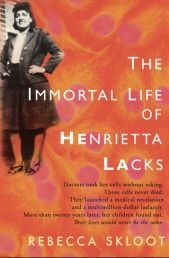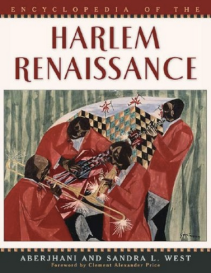
Her name was Henrietta Lacks, but scientists know her as HeLa. She was a poor black tobacco farmer whose cells—taken without her knowledge in 1951—became one of the most important tools in medicine, vital for developing the polio vaccine, cloning, gene mapping, in vitro fertilization, and more. Henrietta’s cells have been bought and sold by the billions, yet she remains virtually unknown, and her family can’t afford health insurance.
Soon to be made into an HBO movie by Oprah Winfrey and Alan Ball, this New York Times bestseller takes readers on an extraordinary journey, from the “colored” ward of Johns Hopkins Hospital in the 1950s to stark white laboratories with freezers filled with HeLa cells, from Henrietta’s small, dying hometown of Clover, Virginia, to East Baltimore today, where her children and grandchildren live and struggle with the legacy of her cells. The Immortal Life of Henrietta Lacks tells a riveting story of the collision between ethics, race, and medicine; of scientific discovery and faith healing; and of a daughter consumed with questions about the mother she never knew. It’s a story inextricably connected to the dark history of experimentation on African Americans, the birth of bioethics, and the legal battles over whether we control the stuff we’re made of.
Winner of several awards, including the 2010 Chicago Tribune Heartland Prize for Nonfiction, the 2010 Wellcome Trust Book Prize, and the American Association for the Advancement of Science’s Award for Excellence in Science Writing, the 2011 Audie Award for Best Non-Fiction Audiobook, and a Medical Journalists’ Association Open Book Award, The Immortal Life of Henrietta Lacks was featured on over 60 critics’ best of the year lists. For more reviews, praise, and media coverage of The Immortal Life of Henrietta Lacks, please visit the book’s press page. Also explore the resources found throughout this site for book groups, classrooms, and more. (From the author’s website).
Read the review at The New York Times.
Watch the book trailer.
Catch a sneak peak at the trailer for the HBO film which airs Saturday April 22nd @ 8pm.
- Purchase your own copy, or check out the ESA Library copy out on the Black History Month display on the upper level of the Library.
 The Stone Thrower: A Daughter’s Lessons, A Father’s Life by Jael Richardson
The Stone Thrower: A Daughter’s Lessons, A Father’s Life by Jael Richardson The Stone Thrower by Jael Richardson
The Stone Thrower by Jael Richardson






